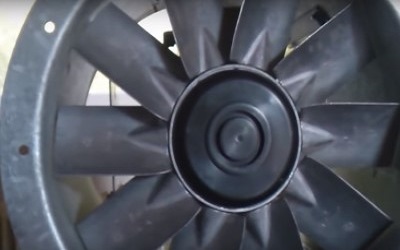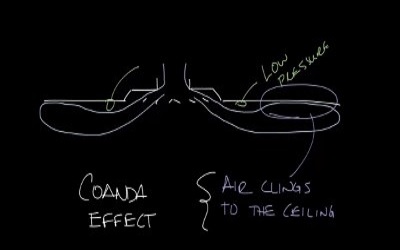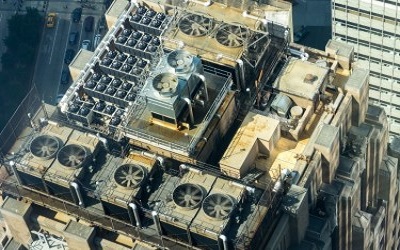J5.2 Air-conditioning system control
J5.2 Air-conditioning system control
[The intent of Part J5.2 is to conserve and improve energy efficiency for air-conditioning systems, this is aligned with the #EnergyHierarchy]
(a) An air-conditioning system—
(i) must be capable of being deactivated when the building or part of a building served by that system is not occupied; and
[If the HVAC system serving the entire building it must be capable of being deactivated when the building is not occupied, likewise if it serves a floor area, it can be disabled when the floor is not occupied]
(ii) when serving more than one air-conditioning zone or area with different heating or cooling needs, must—
(A) thermostatically control the temperature of each zone or area; and
[This clause is nothing new in HVAC designs, say a temperature sensor installed in an east-facing room, it will over cool the south-facing area. Therefore an additional temperature control will be required for the south-facing areas.]
(B) not control the temperature by mixing actively heated air and actively cooled air; and
[For conserve energy, it is not allowed to mix air that is actively heated and cooled by heating and cooling plants.]
(C) limit reheating to not more than—
[This clause is to prevent overcooling then reheating the supply air for different temperature zones. Similar thermal zones are group together.]
(aa) for a fixed supply air rate, a 7.5 K rise in temperature; and
[When reheat is required, it must not increase the supply air temperature by more than 7.5K]
(bb) for a variable supply air rate, a 7.5 K rise in temperature at the nominal supply air rate but increased or decreased at the same rate that the supply air rate is respectively decreased or increased; and
[The allowable temperature rise may be determined by the inverse relationship between permissible temperature rise and supply air rate. In other words, when the supply air rate is reduced in a variable volume system, the corresponding temperature rise can be proportionally increased above 7.5K. Avoid reheat whenever possible, there is always efficient ways to achieve comfort condition.]
(iii) which provides the required mechanical ventilation, other than in climate zone 1 or where dehumidification control is needed, must have an outdoor air economy cycle if the total air flow rate of any airside component of an air-conditioning system is greater than or equal to the figures in Table J5.2; and
[It is needed to capitalise of free cooling when it is cost-effective to do so. Outdoor air economy cycle is not required in climate zone 1. The airflow noted in Table J5.2 is relevant to the size of each equipment serving the space, not the combination of all equipment serving the area. Outdoor air economy cycle is cost-effective only in larger units.]
(iv) which contains more than one water heater, chiller or coil, must be capable of stopping the flow of water to those not operating; and
[This requirement is to reduce pumping energy to its minimum. It may be achieved via automatic control valves.]
(v) with an airflow of more than 1000 L/s, must have a variable speed fan when its supply air quantity is capable of being varied; and
[A unitary air-conditioning system may be exempted. Airflow throttling via damper consumes more energy than airflow reduction using variable speed drives.]
(vi) when serving a sole-occupancy unit in a Class 3 building, must not operate when any external door of the sole-occupancy unit that opens to a balcony or the like, is open for more than one minute; and
[The one minute limit is to allow people to open and close the door without the air conditioning system stopping each time the door is opened. It can be achieved with a timed relay and micro switch on the door.]
(vii) must have the ability to use direct signals from the control components responsible for the delivery of comfort conditions in the building to regulate the operation of central plant; and
[In other words, the plant must be in direct response to the space requirements.]
(viii) must have a control dead band of not less than 2°C, except where a smaller range is required for specialised applications; and
[This minimum dead band between heating and cooling is generally acceptable in most cases except for mission-critical applications.]
(ix) must be provided with balancing dampers and balancing valves that ensure the maximum design air or fluid flow is achieved but not exceeded by more than 15% above design at each
[Piping and ducting systems with balancing capability are more difficult to balance for variable flow operation.]
(A) component; or
(B) group of components operating under a common control in a system containing multiple components, as required to meet the needs of the system at its maximum operating condition; and
(x) must ensure that each independently operating space of more than 1 000 m2 and every separate floor of the building has provision to terminate airflow independently of the remainder of the system sufficient to allow for different operating times; and
[It is to ensure the HVAC can be shut off the floor to floor or in large space independently in the event of different operating hours.]
(xi) must have automatic variable temperature operation of heated water and chilled water circuits; and
[Chiller COP improves at a rate of 2-5% per 1C increase in chilled water temperature, heat pumps COP improve around 2% per 1C. Condensing boilers improves efficiency when return hot water is below 5C. Distribution losses for chilled water reduce by about 10% for every 1C increase in chilled water temperature. 2% per 1C for hot water.]
(xii) when deactivated, must close any motorised outdoor air or return air damper that is not otherwise being actively controlled.
[It is only applicable when motorised dampers are provided. It does not compel dampers to be motorised.]

Table J5.2 Requirement for an outdoor air economy cycle
(b) When two or more air-conditioning systems serve the same space they must use control sequences that prevent the systems from operating in opposing heating and cooling modes.
[It is relevant to supplementary air conditioners to avoid heating/ cooling risk with the base building HVAC.]
(c) Time switches—
[It is purely for energy conservation strategy, when not in use switch off. The Energy Hierarchy top most priority.]
(i) A time switch must be provided to control—
(A) an air-conditioning system of more than 2 kWr; and
(B) a heater of more than 1 kWheating used for air-conditioning
(ii) The time switch must be capable of switching electric power on and off at variable pre-programmed times and on variable pre-programmed days.
(iii) The requirements of (i) and (ii) do not apply to—
(A) an air-conditioning system that serves—
(aa) only one sole-occupancy unit in a Class 2, 3 or 9c building; or
(bb) a Class 4 part of a building; or
(B) a conditioned space where air-conditioning is needed for 24 hour continuous use.
Read more: BCA Part J5.5 Ductwork insulation
Read more: BCA Part J5.8 Pipework insulation
Read more: BCA Part J5.6 Ductwork sealing
Read more: BCA Part J5.9 Space heating
Read more: BCA Part J5.7 Pump systems
Read more: BCA Part J5.10 Refrigerant chillers
Read more: BCA Part J5.12 Heat rejection equipment
Related
Read more: Fan wall
Read more: How to verify the percentage of outside air in an enclosure
Read more: BCA Part J5 Air-conditioning system control
Read more: Microbial Induced Corrosion (MIC) in Pipes
Read more: Is your kitchen exhaust system a fire hazard
Read more: What is coanda effect
Read more: BCA Part J5.5 Ductwork insulation
Read more: BCA Part J5.8 Pipework insulation
Read more: BCA Part J5.6 Ductwork sealing
Read more: BCA Part J5.9 Space heating
Read more: BCA Part J5.7 Pump systems
Read more: BCA Part J5.10 Refrigerant chillers
Read more: BCA Part J5.12 Heat rejection equipment













